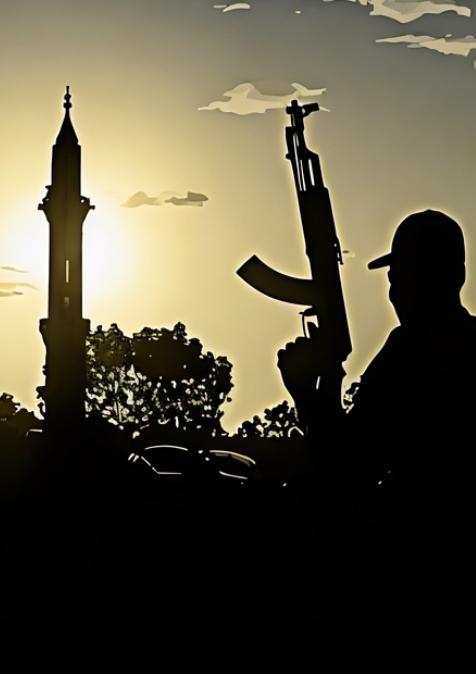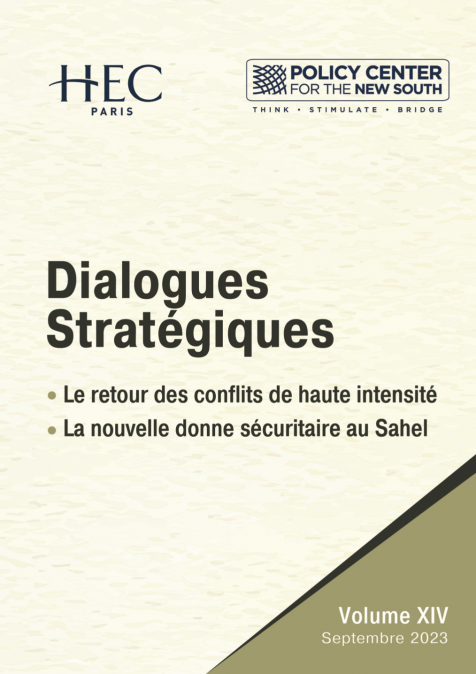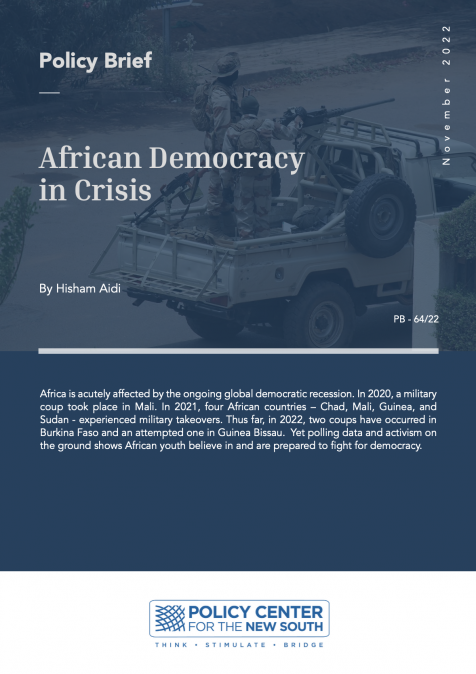Publications /
Opinion
Sudan, a nation long defined by civil strife, military coups, and an uneven trajectory towards democratic norms, now faces a devastating internal war. The eruption of conflict on April 15, 2023, between the Sudanese Armed Forces (SAF) and the Rapid Support Forces (RSF), has escalated into a multidimensional crisis. This conflict, fueled by longstanding political rivalries and resource-based tensions, poses grave risks to the stability of Sudan and the broader Horn of Africa. Beyond Sudan’s borders, the crisis has engaged regional and international actors, underlining Sudan’s role in a broader geopolitical contest. As underscored by Kidane Kiros's analysis, Sudan's crisis is not merely a localized issue but a symptom of structural and systemic failures with wide-reaching implications.
Backdrop to the Conflict
The roots of Sudan's turmoil can be traced back to its fraught political transition after the ouster of President Omar al-Bashir in 2019. Initially, the power-sharing agreement between military leaders and civilian factions provided a glimmer of hope for democratization. However, the October 2021 coup, orchestrated by General Abdel Fattah al-Burhan, derailed these efforts, intensifying divisions within the military and civilian spheres. Concurrently, the RSF, led by Mohamed Hamdan Dagalo (Hemedti), leveraged its economic dominance of gold mining, and its alliances with regional powers, to assert influence.
The rift between Burhan and Hemedti over integrating the RSF into the national army epitomizes Sudan’s fragmented political landscape. These tensions highlight the broader challenges of consolidating state authority in a country where competing factions vie for power and resources, often to the detriment of national unity.
A Nexus of Economic, Social, and Humanitarian Devastation
Sudan is grappling with a multifaceted crisis that has left its economy, society, and humanitarian landscape in tatters. The conflict, which has inflicted an estimated $15 billion in economic losses, has decimated critical sectors such as agriculture and industry. This destruction reflects not only the immediate loss of infrastructure and productive assets but also a deeper, more enduring impact on the nation’s GDP, which will likely take years to recover. The situation reveals how resource-driven economies, particularly those reliant on commodities like gold, often face heightened vulnerabilities in times of conflict, as natural resource exploitation intensifies competition and perpetuates instability instead of fostering sustainable development.
The social ramifications are equally catastrophic and highlight the entrenched inequalities that underlie the conflict. Ethnic tensions, especially in Darfur, have escalated into allegations of war crimes and ethnic cleansing, underscoring how longstanding divisions can resurface violently during times of political and economic fragility. This volatile environment has left more than 90% of Sudan’s 19 million school-aged children without access to formal education, further marginalizing vulnerable groups and undermining future prospects. The displacement of millions has deepened structural inequalities, creating a class of disenfranchised individuals and exacerbating economic and social disparities. These dynamics perpetuate cycles of violence, weakening any efforts at reconciliation and undermining the foundations for sustainable peace.
At the same time, Sudan faces an unprecedented humanitarian catastrophe. By October 2024, an estimated 11 million Sudanese were classified as internally displaced persons (IDPs), with 8.27 million displaced since April 15, 2023. Key regions such as Khartoum, South Darfur, and North Darfur account for significant origins of displacement, reflecting the widespread devastation. The war has transformed major cities into battlegrounds, leaving essential infrastructure—including hospitals, schools, and food supply chains—destroyed. This represents a clear example of how systemic inequalities and political instability converge to exacerbate human suffering, deepening vulnerabilities and limiting access to basic resources.
Food and healthcare shortages have pushed the crisis to the brink of famine, with 755,000 individuals in camps like Zamzam in North Darfur at immediate risk. Over half of Sudan’s population—25.6 million people—faced crisis or worse levels of food insecurity between June and September 2024. The displacement crisis has spilled over into neighboring countries, with Chad, South Sudan, and Egypt hosting over 3.1 million refugees since the onset of the conflict. These cross-border movements illustrate how instability in one state can have far-reaching regional consequences, straining the capacities of neighboring countries and creating a feedback loop of insecurity.
Together, these interwoven crises demand a comprehensive global response. Immediate humanitarian relief must be paired with strategies that address the underlying drivers of conflict and inequality. Structural reforms to reduce resource dependency, rebuild social cohesion, and strengthen institutions are essential for breaking the cycles of devastation and creating a pathway toward stability and resilience. This multidimensional approach is necessary to ensure that relief efforts not only address urgent needs but also lay the groundwork for sustainable recovery and long-term peace.
Risks of Regional Destabilization and Proxy Rivalries
The ongoing war in Sudan poses significant threats to regional stability, particularly in Chad’s eastern Wadai region, which is under immense strain from a substantial influx of refugees fleeing Darfur. A recent report by the International Crisis Group underscores the socioeconomic pressures Chad faces due to this refugee crisis, alongside the broader implications of Sudan’s conflict for the Sahel region.
Mutual accusations between Sudan and Chad—Sudan accusing Chad of aiding the Rapid Support Forces (RSF) and Chad alleging Sudan’s arming of groups targeting its territory—highlight the escalating tensions. With over 930,000 refugees, 90% of whom are women and children, Chad is facing significant challenges in its resource-limited Wadai region. Allegations of arms transfers from the UAE to the RSF through Chad further complicate the geopolitical dynamic, threatening broader destabilization without effective intervention.
Sudan’s conflict extends beyond its immediate neighbors, with its strategic position at the crossroads of Africa and the Middle East amplifying the stakes. Spillover effects, including arms trafficking and refugee flows, undermine the security and economic stability of neighboring countries like Ethiopia, Chad, and Egypt, while the Horn of Africa—a region already marked by fragility—faces heightened risks. Internal displacement across Sudan’s 18 states, particularly in South Darfur, further exacerbates the humanitarian crisis.
Simultaneously, Sudan has become a battleground for competing external powers, reflecting broader patterns of geopolitical rivalry in resource-rich, politically unstable regions. Russia’s alignment with the RSF through Wagner Group operations, including gold mining that circumvents Western sanctions, exemplifies the economic and strategic motivations driving external interference. Other actors, such as the United States, Saudi Arabia, and the UAE, navigate Sudan’s geopolitical complexities, prioritizing their strategic interests over the country’s stability.
The reliance on proxy wars in Sudan underscores a troubling trend in fragile states, where external powers back local factions to secure their agendas. These transactional partnerships, such as Wagner’s military support to the RSF in exchange for access to gold reserves, perpetuate violence and entrench foreign influence. Sudan’s location near the Red Sea, a vital maritime corridor, further intensifies its strategic significance, with discussions around Russian naval bases adding to the regional tensions.
The dynamics of prolonged conflict, erosion of governance, and foreign interference lock Sudan into cycles of dependency and instability, with far-reaching implications for the region. Sudan’s plight serves as a stark reminder of the vulnerabilities faced by politically unstable nations, where resource wealth becomes a magnet for external agendas, entrenching instability and complicating paths to sustainable peace.
Failed Peace Initiatives and the Path to Comprehensive Resolution
International efforts to mediate the Sudanese conflict have faced significant setbacks, reflecting the complexities of conflicts rooted in deeply entrenched inequalities and fragmented political landscapes. Initiatives such as the African Union’s roadmap and the Saudi-U.S.-led Jeddah process have been hindered by the disunity among Sudan’s political and military actors. Leaders like Burhan and Hemedti have capitalized on these divisions, manipulating negotiations while securing external support to sustain their military campaigns. These dynamics illustrate how fragmented environments undermine the prospects for durable peace agreements. The failure of these initiatives stems in part from a narrow focus on elite-level mediation that neglects the structural conditions driving the conflict. Sudan’s longstanding issues of marginalization, resource inequities, and governance imbalances remain unaddressed, perpetuating cycles of violence. Peacebuilding approaches that concentrate on ceasefires and political settlements often fail to engage with these deeper grievances, leaving the root causes of instability intact. The behavior of the warring factions reflects a strategic calculus shaped by their assessment of immediate gains and risks. For leaders entrenched in the conflict, maintaining territorial control, accessing resources, and leveraging external alliances provide tangible short-term benefits. These priorities outweigh the uncertain rewards of peace agreements, particularly in a context where power consolidation is viewed as critical for survival. This rational approach to conflict perpetuates a zero-sum dynamic, where compromise is seen as a threat rather than a path to resolution.
A sustainable resolution to Sudan’s conflict requires addressing both immediate priorities and systemic challenges. Reforming the security sector is essential to dismantling entrenched power structures that perpetuate instability, while ensuring accountability for atrocities is critical to rebuilding trust and reinforcing the Rule of Law. Inclusive dialogue that engages all stakeholders is equally indispensable for addressing grievances at the core of the conflict and fostering legitimacy in the peace process.
Building on this foundation, the African Union, with its principle of “African solutions to African problems,” emerges as a pivotal actor to lead these efforts. Its regional legitimacy positions it uniquely to navigate Sudan’s complex sociopolitical landscape. However, the Union’s effectiveness is contingent on robust international support. Financial resources and technical expertise from global partners are important to operationalize its initiatives and ensure they are adequately resourced.
At the same time, balancing respect for Sudanese sovereignty with the need to counter destabilizing external interference is critical. A carefully coordinated approach that prioritizes Sudan’s agency while fostering regional and international partnerships offers the most viable path forward. This alignment of Sudanese-led processes with supportive external frameworks can create the conditions necessary for an inclusive and sustainable peace.
Conclusion
As the country teeters on the brink of collapse, the international community faces a critical test. Will it prioritize a Sudanese-led resolution that addresses the root causes of conflict, or will it allow external interests to dictate the country's future? The stakes are high, not only for Sudan but for the stability of the Horn of Africa. A unified and inclusive approach is essential to break the cycle of violence and lay the groundwork for a sustainable peace. Achieving this vision will require innovative diplomacy, sustained engagement, and an unwavering commitment to the principles of human rights and democratic governance. Only through such concerted efforts can Sudan’s potential for stability and prosperity be realized.
References:
- Kidane Kiros, The ongoing war in Sudan and its implication for the security and stability of the Horn of Africa and beyond, Policy Brief (PB – 52/24), PCNS.
- Cameron Hudson, Looking Ahead after a Year of Conflict in Sudan, Commentary Published on April 12, 2024, CSIS.
- International Organization for Migration (IOM), Oct 29, 2024. DTM Sudan Mobility Update (10). IOM, Sudan.






